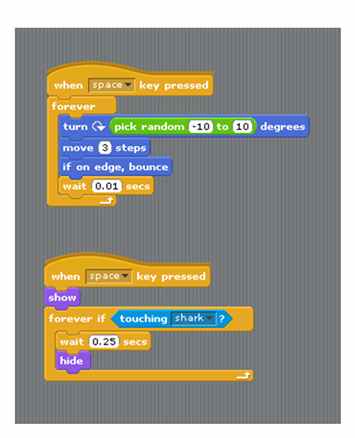Bell Activities to Create a Buzz
ICT and computing is unique in that many of us need our classes to logon before we can start the main tasks of the lesson. However the moment the pupils enter the classroom they need to be learning, like a radio DJ a teacher cannot have ‘dead’ time. So as the sound of the bell is still in your ears you need a task which doesn’t rely on anyone being logged on, in fact they are completing it at the same time. There are certain characteristics which make an outstanding ‘Bell’ activity:
- It needs to be linked to the theme of your lesson
- It doesn’t need an explanation
- Everyone can offer an answer
- It doesn’t use the computers
- It creates a ‘buzz’ in the classroom
Here are 5 bell activities to start you off:
1) Your first database lesson with pupils who know very little about what they are, I’ve used this with Year 7;
Using scrap paper, design an egg holder.
This sees all kinds of constructions being created, but the key is to get them talking about why it looks like it does. This links straight into the starter which is understanding characteristics of data and different data types . All containers take into account the characteristics of what they are holding (an egg is breakable, a certain size and shape etc). Data needs to be kept in a suitable container – Tables.
2) Introducing 3D design, for example Google Sketchup, I’ve used this with Year 8;
Draw a cube in your chosen program and hide something behind it, (a person, ice-cream van etc), put this on the white board with the following question –
Draw/Describe what’s behind the box.
This really baffles some of the students, but just repeat the question. The range of answers is brilliant, from ‘the back of the box’ to some weird and wonderful ideas. The discussion is what you are promoting, the imagination will be useful when it comes to the designs you want them to produce. It always puts a smile on my face to hear the ‘ooohs’ as you reveal what is behind your cube, make it good!
3) Anywhere in an algorithms unit the following causes lots of discussion, it is too hard for some and quite easy for others, who can then be told to write a message back.
Logon then solve….
UIJT JT B DPEF
—- — – —-
Hint: The letters of the alphabet may have shifted……
You sometimes need to add an additional hint after a minute. U = T. If you’re reading this late at night or too early in the morning to have the old grey matter fully working the answer is – This is a code. This is a good bell activity to lead you into cyphers and simple encryption.
4) If you are introducing hardware, show either a muddled up image of something or unusual photos of components (macro shots look fantastic). There are lots of images online which can be cut up using a graphics program and if you can’t take your own macro shots, find very large resolution images and copy out a certain part. Put the caption ‘What Is it?’ and listen as the discussions start.
5) Teaching code, perhaps with Scratch. Interpret the code on the board, the possibilities here mean you can have very simple code or very complicated. It can be used to introduce new techniques which you want the class to include during the lesson.
What does this sprite do?
What starts it?

This can link nicely into a starter, using the class suggestions to move the lesson forward.
My golden rule for bell activities is make them a bit different, competition is always good as well, so think about lists they can make or ‘first one to give me the answer’. Have fun right from the start!
Rob Wilks
Team Leader ICT
Roundhay School – Leeds



